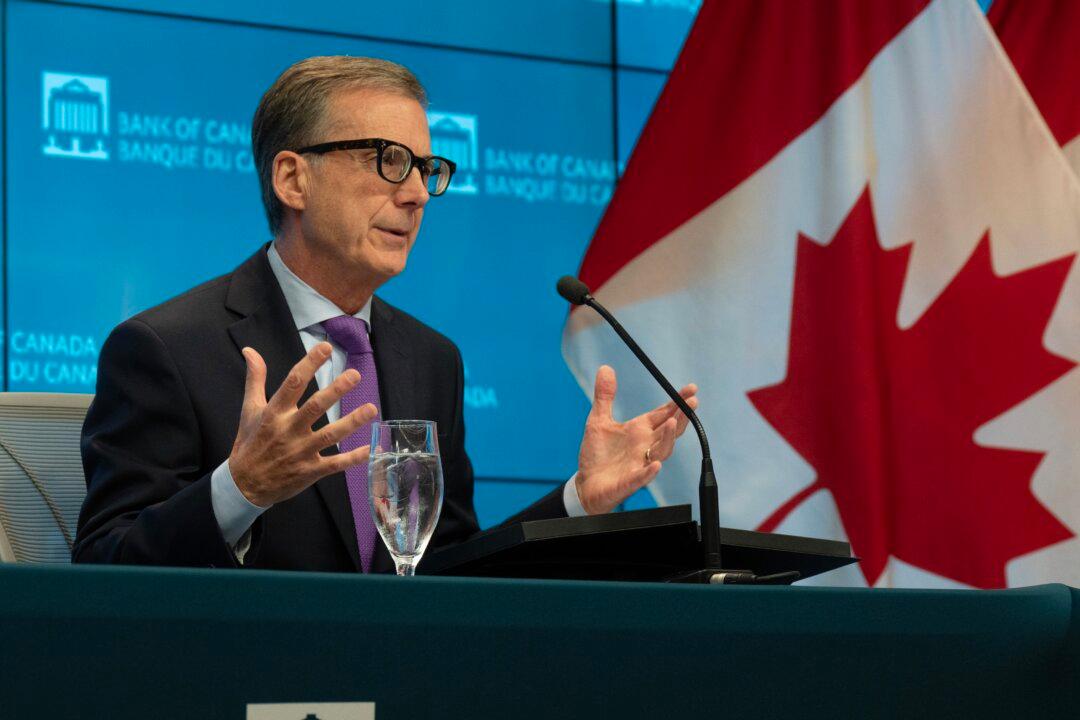OTTAWA—The Bank of Canada gave a sombre outlook for the Canadian economy, quite in contrast to its view of the U.S. economy, as part of its latest interest rate decision on Oct. 25. But while the BoC says this phenomenon is temporary and that the two economies will have similar growth rates in 2024, some advantages the U.S. economy has are being revisited.
Bank of Canada governor Tiff Macklem called the U.S. economy “surprisingly strong” in his opening statement at the central bank’s press conference.
Estimates of U.S. third-quarter gross domestic product (GDP) are in the 4 percent to 5 percent range. Meanwhile, Canada’s second-quarter GDP shrank by 0.2 percent and RBC indicated on Oct. 20 that it is tracking another small decline for the third quarter of 0.5 percent.
The Bank of Canada is projecting the U.S. economy to grow 2.2 percent for 2023, compared to 1.2 percent for Canada.
But the BoC expects the weight of higher interest rates to slow the U.S. economy considerably in 2024 with growth slowing to 0.8 percent and Canada’s economy growing by 0.9 percent.
Key Differences
A notable difference between the two economies is how productivity is languishing in Canada while it is robust in the United States.
“We’re seeing that in the current [economic] cycle, productivity growth in Canada has been pretty flat,” Mr. Macklem said in response to a question from The Epoch Times.
“It is growing in the U.S. and, to be frank, productivity growth makes everything easier. It pays for higher wages without stoking inflation. It supports non-inflationary growth. So you know that that is another difference between Canada and the United States.”
The U.S. economic outperformance currently being seen goes back to larger and more effective government support during the pandemic, according to Jean-Paul Lam, University of Waterloo economics professor and former Bank of Canada assistant chief economist.
“The U.S. fiscal stimulus was around 27 percent of GDP compared to around 20 percent in Canada, and 12 percent in EU countries,” he told The Epoch Times.
“Unlike Canada, which adopted a mix of policies (wage subsidies to employers to retain workers, more generous employment benefits), the U.S. policy on focusing mostly on making unemployment benefits more generous allowed workers the freedom and flexibility to adapt to changing job conditions, including remote work opportunities,” Mr. Lam added.
Another big difference between the Canadian and U.S. economies is the state of the consumer. Canadian retail sales declined marginally in August, by 0.1 percent from July, and the BoC’s survey of consumer expectations indicated that nearly 60 percent of consumers reduced spending in the third quarter to guard against high inflation and rising interest costs.
But in the United States, retail sales leaped by 0.7 percent in September, along with upward revisions to July and August’s initial readings.
The BoC said the U.S. consumer has drawn down savings a lot more while the Canadian consumer is more concerned about debt and mortgage renewals, which typically happen every five years whereas in the United States, borrowers often lock in a mortgage rate for 30 years.
“You'd expect monetary policy to have more traction in Canada,” Mr. Macklem said, given this heightened sensitivity the Canadian borrower has.
Thus, Canadians have shifted pandemic savings into higher interest savings (term deposits) and are spending less, the central bank noted.
CIBC chief economist Avery Shenfeld said in an Oct. 20 note that as the U.S. consumer keeps spending, the falling U.S. savings rate is a sign that higher interest rates have not taken effect.
“Perhaps it’s that Americans aren’t fretting as much about their current debt burdens, which are lower than those in Canada, and locked in for up to 30 years at ultra-low interest rates,” he said.





